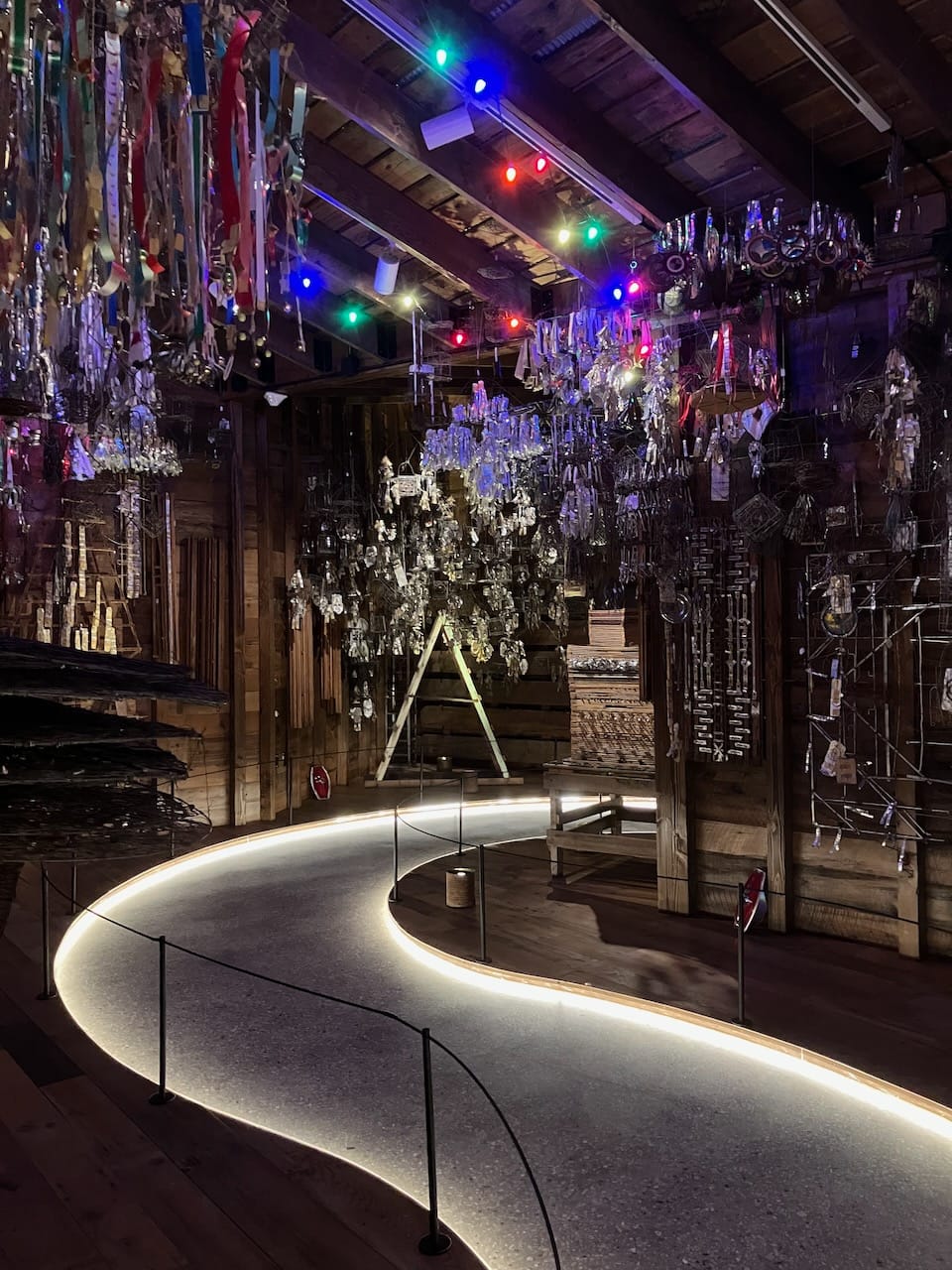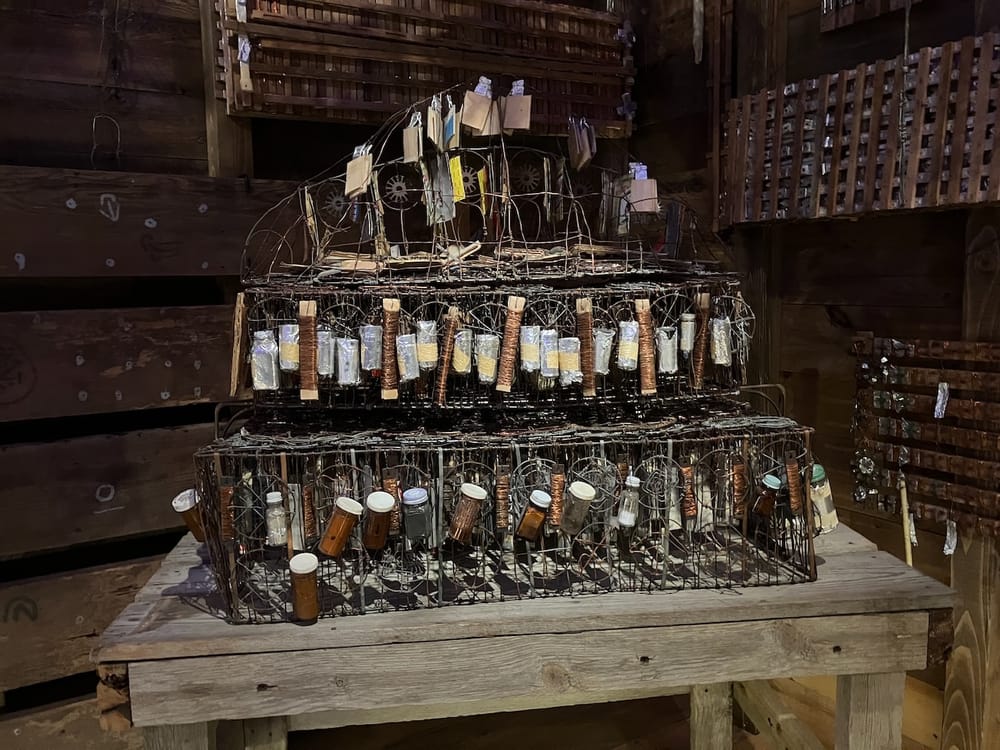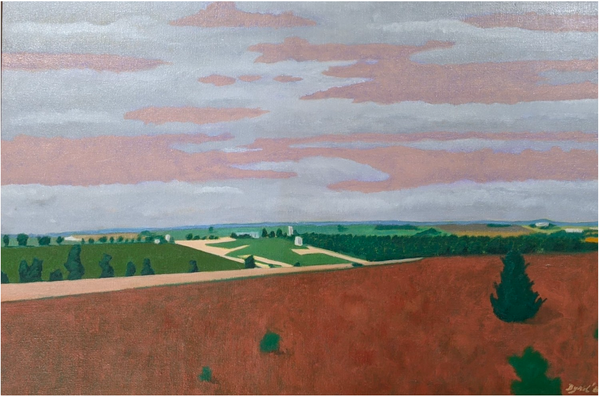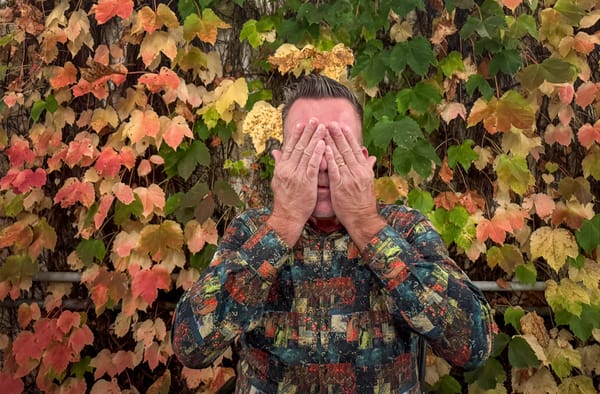Privilege and Compulsion
By Michelle Sharp
I recently had the pleasure of experiencing Emery Blagdon’s The Healing Machine at the John Michael Kohler Art Preserve. This institution’s mission is to collect and maintain site-specific installations; though these installations are removed from their original locations, the museum strives to create as much context as possible. In this case, they have built a shed that visitors can safely walk through to experience the piece.
The Healing Machine was started in 1955. From the Art Preserve’s website, “After inheriting a piece of property in Garfield Table, Nebraska, Emery Blagdon sought to understand the healing properties of Earth’s natural forces. Inspired by the experience of watching his parents suffer with terminal cancer, he sought to create a space that could channel the curative properties of minerals, magnetic fields, and electrical currents. This endeavor would occupy the artist for the next thirty years.”. Blagdon collected a variety of found materials, such as wire, foil, beads, and ribbon, and arranged them as kinetic assemblages in one of his farm’s sheds. The installation includes paintings on salvaged wood, many of which were installed face-down on the floor, as well as containers of elements and minerals sourced from a pharmacist friend, Dan Dryden. Blagdon himself passed from cancer in 1986, still working on his machine. Dryden and his friend Don Christensen acquired and titled the piece soon after. It was later bought by the Kohler Foundation in 2004 and then gifted to the John Michael Kohler Arts Center in 2007.

This piece evoked many specific thoughts for me while I walked through; as someone who grew up on a midwestern farm, particularly with relatives who lived through lean years, there is a particular type of useful farm hoarding that is familiar: bits of wire, rusted coffee tins of screws and nails, lengths of twine, damaged plow blades, things that still have life in them and “somebody might use”, salvaged items that are kin to Emery’s found materials. However, so many of these things never reach their reuse potential. They unfortunately decay as the family passes on, eventually being sold for scrap or plowed over when the shed collapses. There is great intention and love put into this collecting. Perhaps too much, as evident by my own family’s accumulated peanut butter jars full of washers.
But what makes Blagdon’s shed different from all the other midwest farm workshops? In many ways, his piece is just as methodical and planned out as the myriad of pieces hoarded by so many other homesteader-types. There’s a certain type of compulsion in making sure you collect every nail while reclaiming a board, though some of it is from projected need and some of it is from the common sense to not let a loose nail puncture a tire. There’s generational planning included when sorting the bits into their various recycled jars. There’s intention and handiwork in arranging the materials for others to use. What makes Blagdon’s compulsion special, meaningful, and worth conserving as art? What makes us not write-off his efforts and collection?
I would argue that it is largely privilege. In this case, specifically the privilege of having one or more friends who believed in the value of the work and had the resources to protect it. Having Dan as a confidant and collaborator gave the art an advocate and caretaker. If Dan had not been a source of materials, he may never have known the context and intention of the art and artist. If Dan did not have the time or funds to acquire the piece, it would either have been lost to time despite the best intentions of the family or been dismissed as the hobby of someone whose mental stability was questionable. All of this without factoring in how Dan connected with the Kohler Foundation, Inc. and facilitated its sale 18 years after promoting and exhibiting the piece. As summed up by Leslie Umberger in a PBS episode on the piece, “The work of vernacular environment builders is very often saved by the hair of its chin by one individual that happened to be in the right place at the right time who happened to understand how special it was.”
Those unique individuals allow the rest of us in, give us the stories and power to see the work as they and the artist see it. People like Dan and these foundations highlight not only the craftspersonship that goes into this compulsive and intricate work, but also how the artist’s vision relates to society. Emery was intent on sharing the work, inviting people in to heal and experience the energy movements as he did.
It takes a certain bravery to exist authentically, and unapologetically authentically, in rural midwest communities. Especially when that existence is not necessarily geared towards traditional productivity or social etiquette. In my home community, this work likely would have been scorned as a waste of time and met one of two fates. The first, being covered up to protect the deceased individual from appearing too unhinged. Very few would want their great-uncle’s legacy to be “the kook who made recycled chandeliers”, depending on how kindly that community is. The second, to let the work exist until its natural deterioration without any particular caretaking. Though it wouldn’t be anything the family or community could financially bear to keep, it also wouldn’t be something they could bear to throw out. Emery worked too hard on it, put so much blood, sweat, and love into it, it could be something someone else might use. I find it incredibly brave that not only did Emery make and share this piece with folks, but that he was able to build a community that understood the version and was willing to go to bat for its conservation.
One could also argue that white privilege saved this work of when so many folk and self-taught artists of color have been written off, but that’s an article for another day. If you have the chance, visit the Art Preserve to experience this magical piece. The time and dedication Emery put in is breathtaking.

https://www.jmkac.org/artist/blagdon-emery/
https://www.pbs.org/video/pbs-emery-blagdon-and-his-healing-machine/
https://americanart.si.edu/artwork/healing-machine-110504
Michelle Sharp (b. 1992) is an artist currently working in the Fox Valley area of Wisconsin. She works primarily in bookmaking media, photography, and writing. Michelle is inspired by the mundane, acts of sharing & discovery, literature, and structured systems.




